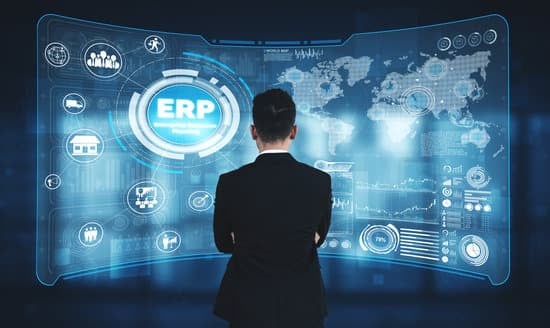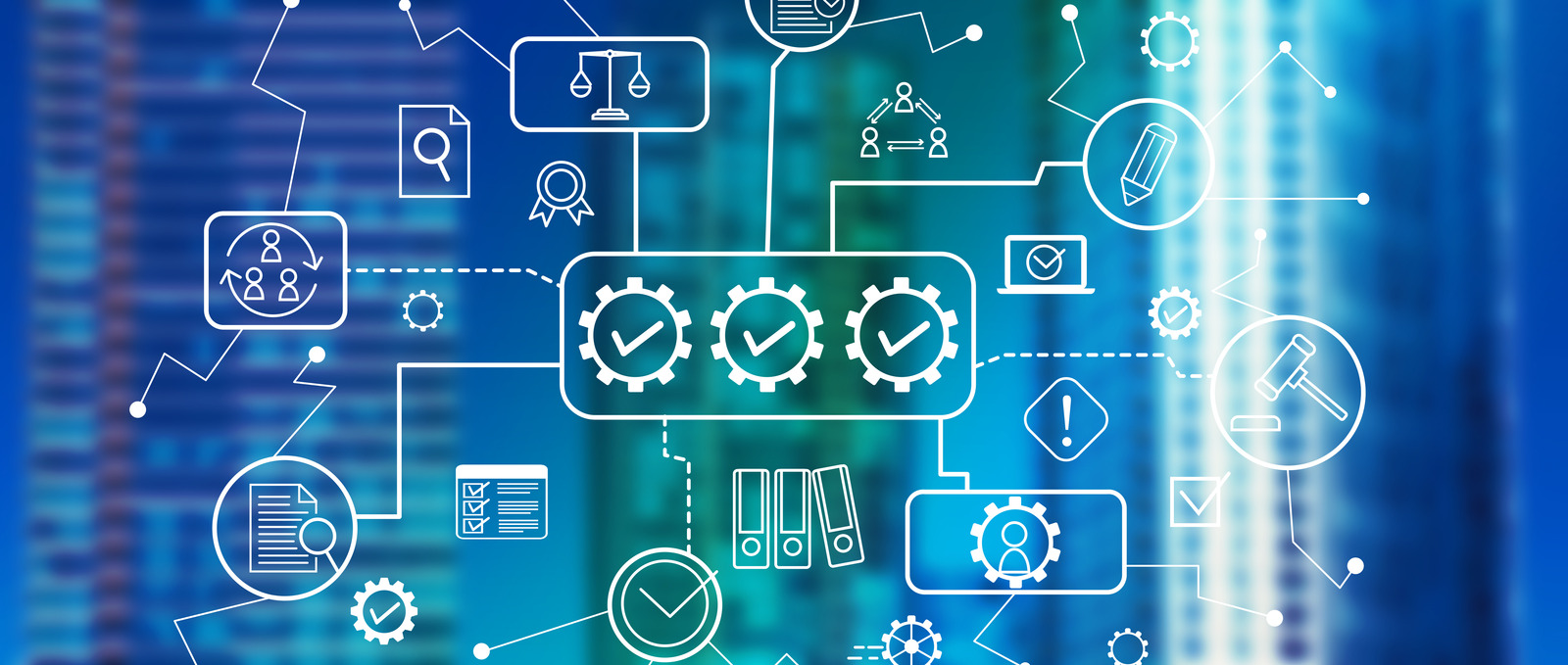7 Things to Look for in an ERP System
Selecting the right enterprise resource planning (ERP) system for your business can help you streamline your operations, improve efficiency, and...

As technology advances, older software inevitably reaches its twilight, a phase known as "sunsetting." Once a software sunsets, it no longer receives technical support or updates from their vendor. Organizations must decide what to do next before their ERP system reaches this point in order to reach their business goals.
Embarking on the migration journey away from sunsetting technology requires meticulous planning. Every facet of potential solutions, from functionality to cost-effectiveness, requires careful evaluation through an ERP evaluation process. User adoption is paramount; as without employee engagement, even the most advanced system may flounder. Data migration, a Herculean task, ensures that no information is lost in the transition.
Lastly, embracing change is vital to success. After all, sunsetting software presents not an end, but a new beginning— a chance to chart a course towards digital greatness.
Vendor support and maintenance is crucial when transitioning away from a legacy system. Once the software bids its final farewell, the vendor's support also ceases, leaving organizations without technical assistance. This lack of support poses a formidable challenge, potentially disrupting business operations and resulting in financial setbacks.
The absence of timely assistance can transform minor glitches into major headaches, hindering productivity, and eroding confidence in the new system. Imagine the frustration of encountering an issue and realizing there's no vendor lifeline to pull you out of the digital quagmire.
To avoid such predicaments, organizations must evaluate the support and maintenance options offered by the new ERP system vendor. It's like making sure you have a reliable vehicle and capable drivers before setting off on a journey through challenging terrain.
Ensuring the presence of a robust support infrastructure post-implementation is paramount. Organizations need assurance they won't be left stranded with technical distresses, grappling with legacy software issues without a helping hand to guide them.
By switching to a supported software solution, organizations protect themselves from dealing with subpar support. This means they get help when they need it and expert advice on hand. Having reliable support means less downtime, more productivity, cost savings, and smooth sailing on the path to digital success.
Navigating the realms of data security and privacy is crucial when transitioning away from outdated software. Without the lifeline of consistent updates and patches, software becomes vulnerable to cyber threats. This leaves organizations exposed to security breaches that could devastate their digital defenses (Learn more at RubinBrown). Each day that passes increases the risk, endangering the organization's data repositories and undermining the foundation of its infrastructure.
The longer an organization sticks with a sunset application, the more it opens itself up to digital predators. It's important to switch to software that is regularly updated to protect your system from cyber threats. This will help strengthen your defenses against the constantly changing online dangers.
As we advance towards the realm of data security, maintaining vigilance becomes our primary directive. It's imperative to not only have data security measures in place but to reinforce them effectively. The implementation of robust security protocols and access controls serves as the initial barrier against cyber threats.
Data security isn't a luxury anymore; it's a requirement. By transitioning to a supported and fortified software solution, organizations ensure the security of their data and facilitate uninterrupted digital transformation, free from the threat of security breaches.
Managing the intricacies of data migration mirrors the challenges of transporting valuable assets across uncertain terrain. Every piece of information, whether it's customer profiles or financial records, needs to be securely transitioned to the new system or platform. Safeguarding the integrity of this data during the process is crucial.
However, the focus extends beyond simply moving data from one location to another. It's imperative to ensure that data remains untarnished throughout the migration journey. Organizations need to be on the ball, guarding their data stores from possible threats and keeping stakeholders' trust intact. In the fast-paced world of data migration, careful planning and vigilance are essential for continued business success.
Navigating the complexities of business continuity during an ERP transformation demands steady leadership and careful planning. As organizations move through the challenges of transition, it's essential to anticipate potential disruptions and establish contingency plans.
Before starting on an ERP journey, conduct a thorough risk assessment. Organizations must identify potential obstacles and plan alternative routes to ensure a seamless transition.
The ERP project manager plays a crucial role as the leader of the project, guiding the organization through challenges while staying focused on meeting goals. With a deep understanding of business requirements and a thorough ERP assessment, they lead the organization through changes, identifying essential ERP features to ensure operations run smoothly without interruption.
Through rigorous ERP system comparison and evaluation, organizations can confidently move forward, knowing they've selected the right solution to accomplish the transformation.
Business continuity isn't just advantageous; it's essential. By proactively anticipating disruptions, crafting contingency plans, and entrusting capable leaders to run the project, organizations can move smoothly toward their digital goals.
As organizations begin their digital and ERP transformation, they shouldn't forget about giving their business processes a shake-up through reengineering. Making the switch to modern software solutions not only opens up a whole new world of possibilities and features, it also pushes organizations to the front of the pack in their industry.
The drive towards digital greatness isn't just about swapping one system for another. It's an opportunity for continuous improvement. Business process reengineering has become the compass that guides organizations towards greater efficiency and effectiveness. By scrutinizing existing workflows with a discerning eye, organizations can identify bottlenecks and inefficiencies, making strategic tweaks to optimize operations.
From streamlining core functionality to embracing innovative approaches, every adjustment contributes to the broader tapestry of business growth. It's not just about shaking things up for the sake of it. It's about using the transformation to steer the organization towards new heights of success. Business process reengineering is a journey towards continuous improvement, guiding organizations towards their goal of digital excellence.
As organizations transition from legacy software to modern solutions, the question of customizations and integrations looms large. Assessing the intricacies of the current ERP system becomes of utmost importance, as it holds the key to unlocking a seamless transition to the new software solution.
Configuration vs customization also emerges as a critical consideration. While some functionalities may be easily configured to align with the organization's needs, others may require more extensive customization. Business process reengineering comes into play as organizations evaluate the necessity of these customizations and integrations, weighing the benefits against the potential complexities.
Rebuilding certain functionalities or seeking alternative solutions becomes the compass guiding organizations through this labyrinth of decisions. It's not merely about replicating existing capabilities. It's about crafting a modified solution that harmonizes with the organization's evolving needs and aspirations.
Customizations and integrations serve as the linchpin that binds legacy systems with future-forward solutions. By carefully navigating this terrain, organizations can ensure a smooth transition, seamlessly bridging the gap between past and future, and unlocking the full potential of their digital journey. For additional findings on decision-making and risks of ERP customization, follow the study link at ScienceDirect.
As organizations embark on their ERP transformation journey, they encounter the complex landscape of compliance and regulatory requirements. Legacy software may no longer adequately guide companies through these evolving standards, exposing them to risks of non-compliance and legal consequences.
Transitioning to modern software solutions that seamlessly adhere to the latest regulations enables organizations to mitigate the uncertainties of regulatory compliance. Compliance serves as the guiding compass protecting the organization's reputation and integrity.
Thorough assessments act as the model, assisting organizations in navigating the regulatory maze by identifying any compliance gaps and enabling proactive measures to prevent regulatory issues.
In the dynamic realm of regulatory requirements, compliance is not a destination but an ongoing journey. By maintaining vigilance and proactivity, organizations can confidently ensure their alignment with regulatory standards and peace of mind.
Looking ahead, organizations must prepare for the increasing emphasis on Environmental, Social, and Governance (ESG) reporting within future ERP systems. Addressing these ESG reporting demands necessitates careful planning and adaptation.
As global initiatives and stakeholder expectations push for greater transparency and accountability in ESG practices, organizations must equip their ERP systems to handle the growing complexity of ESG reporting (Dhondt, F. 2023). This may involve integrating ESG metrics and disclosures into the ERP framework, empowering business leaders to steer their organizations towards sustainability and responsible practices.
By incorporating ESG considerations into their ERP transformation strategies, organizations can navigate towards a future of greater resilience, transparency, and success. Just as skilled navigators adjust their sails to catch the changing winds, organizations must adapt their ERP systems to meet the evolving demands of the seas of compliance and sustainability.
Incorporating ESG considerations into ERP transformation strategies enables organizations to navigate towards a future characterized by resilience, transparency, and success. Organizations must adapt their ERP systems to meet evolving compliance and sustainability demands.
Organizations are faced with the task of managing costs effectively as they transition from one system to another. Transitioning away from sunsetting software requires careful planning and financial foresight.
The financial risks are substantial when continuing to operate outdated software, including increased maintenance expenses, heightened security vulnerabilities, and the potential for costly data breaches. Additionally, compatibility issues with other existing systems can disrupt operations and add further financial strain.
Total cost of ownership must be assessed over time. This involves examining licensing fees, implementation costs, and expenses related to staff training. By making informed financial decisions and accounting for long-term implications, organizations can navigate the complexities of ERP transformation with fiscal responsibility. This ensures a smoother journey and enhances financial stability in the long term.
In the context of ERP transformation within a business, effective communication and stakeholder management play vital roles in guiding the process forward. The ERP project manager must ensure that all stakeholders are engaged and well-informed about the transition.
Regular updates serve as clarity and guidance amidst the evolving landscape of change. By actively addressing stakeholders' concerns and encouraging their feedback, the ERP project manager can navigate the complexities of change management with assurance, facilitating a seamless transition for all parties involved.
Like skilled sailors working in unison, effective communication and stakeholder management set the stage for success, ensuring that the voyage towards ERP transformation is met with collaboration, understanding, and unity of purpose.
Effective communication and stakeholder management establish the foundation for success. This fosters collaboration, mutual understanding, and a shared commitment to achieving the goals of ERP transformation.
Transitioning from sunsetting software to a modern ERP solution necessitates thorough planning and deliberation. Ten key factors steer this process, encompassing aspects such as vendor support, data security, and compliance with regulatory requirements. These factors serve as guiding principles, aiding businesses through the challenging terrain of ERP transformation.
The journey commences with an assessment of software compatibility with industry standards and a comprehensive ERP evaluation. As organizations embark on their path toward digital transformation, the significance of user training and adoption cannot be overstated. Businesses must ensure that their workforce is well-equipped with the necessary knowledge and enthusiasm to navigate the new system effectively.
During the whole journey, making sure everyone is aligned while managing stakeholders well are key.
Ultimately, the transition from outdated software to a modern ERP solution is more than just reaching a destination; it signifies embracing change, innovation, and expansion. By diligently navigating these ten key factors, businesses can chart a course toward digital excellence and organizational triumph.

Selecting the right enterprise resource planning (ERP) system for your business can help you streamline your operations, improve efficiency, and...
.png)
Enterprise Resource Planning (ERP) systems are no longer just tools for industry giants—they’ve become the backbone of operational efficiency for...

There are many reasons that a company chooses its enterprise resource planning (ERP) system from improving efficiency to streamlining operations.